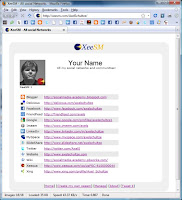When companies begin to engage in social media they typically start in the marketing department with some rather tactical marketing campaigns. In those early models a large company either hired some social media “experts” to do the campaign or found some engaged people internally. The rest of the organization does “business as usual”. The problem quickly surfaces in sales “What are these guys talking to my customers”, on the service side “what are they promising to our clients”, and the product management team still doesn’t get any feedback how to better launch the next generation products. While it is obvious that social media is a key method to create a better customer experience, a better way to listen to the market, a faster way to react to needs and a less expensive way to become part of the market, the “social media marketing campaigns” alone can’t do the job. An isolated “campaign” is often counter productive and it would be better to just not engage at all.
Learning from the early experiences we developed a holistic approach, a cross functional organization model that is able to carry out a social media strategy. The so called ComStar model integrates all departments that have a touch point with the market into the social engagement strategy. Only a small core of social media trained and experienced people is necessary to help steer even large global enterprises into a new direction. An internal social media strategy and it’s leverage effect makes it possible.
At it’s core, the ComStar Model has one principle:
– Develop a social media service team (SMST) that supports all departments in the organization
The SMST members do not necessarily tweet, blog, comment themselves instead empowers others to do so.
Similar to IT team, finance support or HR that services an entire company, the SMST functions the same way.
With the ComStar Model, the SMST (Social Media Service Team) is the guardian angel of the social media strategy. The main objective is to inspire, motivate and service the strategy relevant departments such as marketing, sales, service, product management, HR and other. The departments in turn engage with the customer base, prospects and the market in a whole. In this model the SMST is the cordial spine for the engagement, while sales keeps the control and the relationship to their customers (even so in a different more social manner), marketing keeps being the creative part in the new engagement model “not pushing the message” but fueling the conversation, product managers get the tools and methods to better listen to needs of the market and service teams get the support to be better integrated in customer issues.
Behavioral changes of “the old guard” in particular on the sales side are as painful as necessary. Change has never been an easy task. But also change has never been more important and has never shown more successful results like today. Creating some fan pages and a few tweets don’t create a better customer experience – nor does it generate the often promised millions of additional revenue. But a great and ongoing trust building relationship with the market does, as we can see in cases like Zappos.
We will present the model in greater detail on
Fri, Aug 14, 2009 9:00 AM – 10:00 AM PDT
Leasdership Series Webinar
https://www2.gotomeeting.com/404589362
Agenda:
– Social media impact to our business operations
– ComStar, an organization model for social media strategies
– Comparing structural differences
– Implementation challenges
– Job description, work flow and responsibilities
– Motivation and compensation considerations
– Cross functional reporting models
– A holistic view to corporate social media
Registration:
https://www2.gotomeeting.com/404589362
 Axel Schultze MyXeeSM
Axel Schultze MyXeeSM

 Need a chance to express yourself?
Need a chance to express yourself? 

